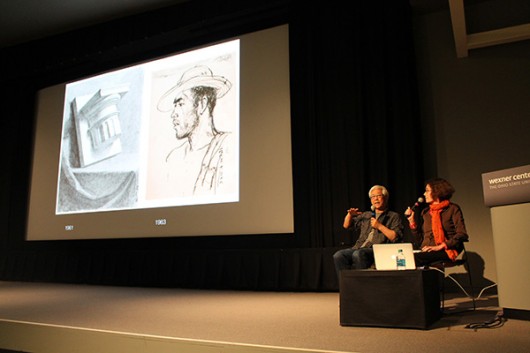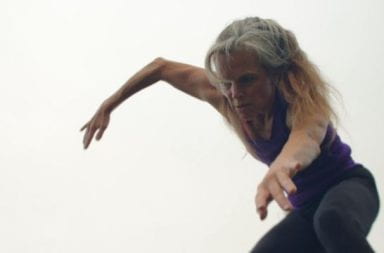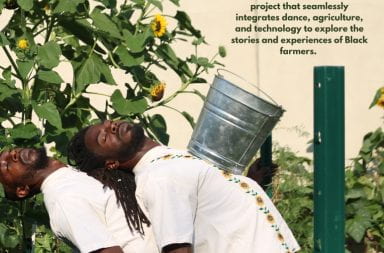
Zhang Hongtu (right) speaks with history of art professor Julia Andrews (left) at his art talk at The Wexner Center for the Arts on Nov. 5. Credit: Maria Martello | Lantern Photographer
New York City is a cultural mixing pot, especially for artist Zhang Hongtu, whom moved to the city from Beijing in 1982. Hongtu visited Ohio State’s campus at the Wexner Center for the Arts on Thursday evening to mainly discuss his piece, “Bird’s Nest in the Style of Cubism” — an artwork that’s stirred controversy.
The painting was seized by Chinese authorities on its way to the Olympic-themed show in Beijing for its inscriptions of words like “Tibet,” and “Human Rights” on the canvas and general commentary on the negative sides of the Beijing Summer 2008 Olympics.
“‘Bird’s Nest in the Style of Cubism’ is an excellent way to deconstruct past connotations on Chinese political stances since his history of moving to the states is richly based on that,” said Taylor McIntyre, a fourth-year in political science.
The event is affiliated with the “After Picasso” exhibit that is currently running at the Wexner Center. Hongtu was heavily inspired by Picasso’s style of cubism when creating his piece.
Hongtu said his early artwork pieces of the 70s and 80s were subject to censorship and how it mainly influenced his style of that period. He also discussed his various re-creations of Mao Zedong, especially one as Jesus at the Last Supper, and his love for natural landscapes.
Hongtu also featured OSU History of Art professor Julia Andrews, whom has contributed an essay to Hongtu’s opening for his upcoming event at the Queens Museum in New York.
“I came because his story is interesting and because we discuss his works in class (with Professor Andrews),” said MacLean Wright, a second-year in finance.
Hongtu’s career is prominent, and his piece, “Bird’s Nest in the Style of Cubism,” definitely further paved the way for many voices to speak and have an opinion about government issues.
“Cubism is a way to put things together,” he said.


